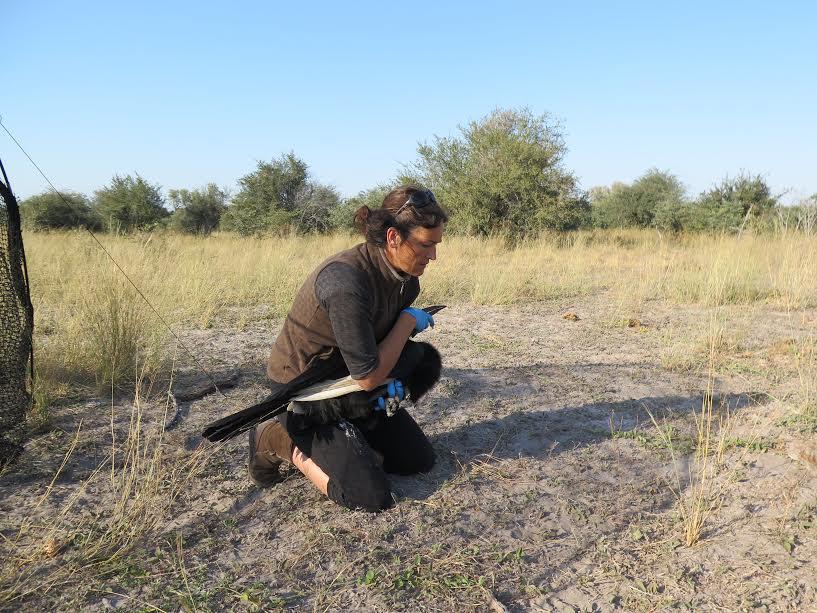Social media from Whitley Fund for Nature featuring the Mabula Ground Hornbill Project.
Lucy Kemp
Other projects
Our primary aims, aside from improving the conservation status of Southern Ground-Hornbills, is to ensure the following is undertaken:
i) Reduce unnatural mortality,
ii) Restore population using reintroductions,
iii) Manage micro-and macro-habitats for maximum SGH productivity,
iv) Development of bespoke conservation interventions based on cultural beliefs and Indigenous Knowledge-Systems,
v) Building research and conservation capacity for SGH within the project, grass-roots NGOs, provincial and national conservation authorities,
vi) Future-proofing SGH conservation plans for climate change,
vii) Implementation of a national monitoring plan to ensure we can evaluate progress for the above objectives.

Lucy Kemp prepearing to release a SGH after genetic and health sampling
Southern Ground-Hornbill (SGH) are regionally Endangered and thus nationally prioritised as a Threatened or Protected Species. It is a top-order predator, providing ecosystem services. It is also culturally significant, associated with good summer rains, and as a totem animal. Additionally, SGH are a valuable flagship and umbrella species due to its large spatial requirements, so any reduction in threats for SGH also benefit other threatened species such as vultures, Secretary birds and wild dogs in savanna and grasslands. Recent cognitive behaviour research has also shown SGH to be highly intelligent.
SGH disappearance from large tracts of historical range and continued decline, mostly on commercial farming land, is caused by anthropogenic threats:
1. Lead toxicosis from spent-lead ammunition;
2. Secondary poisoning from bait put out for so-called ‘pest’ species e.g jackal and leopard;
3. Electrocution on transformer boxes;
4. Wind-farm development;
5. Loss of nest trees due to elephant damage or extreme floods/winds and timber harvesting;
6. Off-take for use in traditional medicine and ritual;
7. Persecution for breaking windows (a natural territorial display)
8. Disease susceptibility.
Less than a third of the population is safe within protected areas in South Africa, and almost all threats are anthropogenic in nature. However, some sub-populations experience high levels of cultural protection and these populations persist in less-than-ideal habitat (rural-agricultural mosaic interspersed with fragments of natural habitat), with no direct persecution. These cultural conservation values however are being eroded by increased urbanization.
The MGHP has been successfully developing protocols for harvest, hand-rearing, capture, artificial nest design, husbandry and release techniques since its formation in 1999 and is currently the lead agency responsible for the implementation of conservation action within the formal conservation action plans. A trans-disciplinary approach is thus vital and we have over the years, put together a sound and tested strategy for the conservation of this species. Key now is ensuring swift implementation of the plans.
Project Updates
14 May 2021
5 Oct 2021
Newsletters from Mabula Ground Hornbill Project
October - December 2019 July - September 2020 October - December 2020 January - April 2021 May - August 2021 Breeding Season 2021-2022 August - December 2022 January - July 2024 January - June 2025